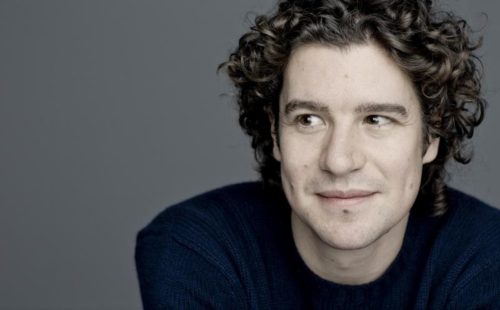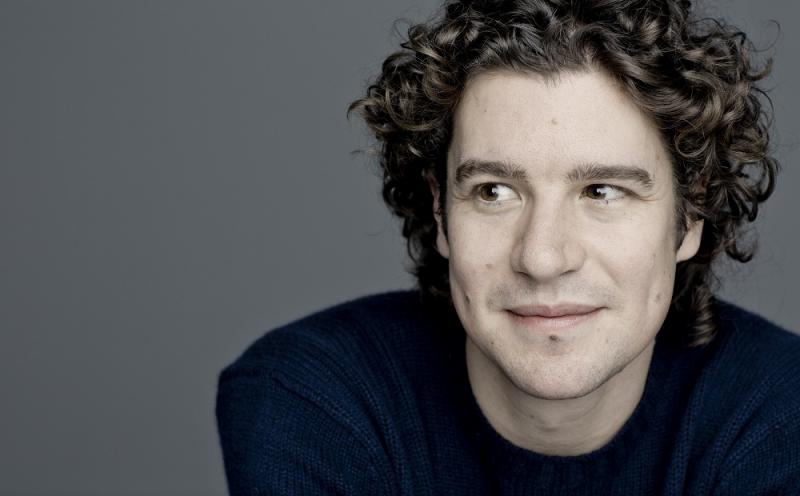 United Kingdom Beethoven, Mahler: Anne-Sophie Mutter (violin), Khatia Buniatishvili (piano), Pablo Ferrández (cello). London Philharmonic Orchestra / Robin Ticciati (conductor). Royal Festival Hall, London, 11.3.2020. (CC)
United Kingdom Beethoven, Mahler: Anne-Sophie Mutter (violin), Khatia Buniatishvili (piano), Pablo Ferrández (cello). London Philharmonic Orchestra / Robin Ticciati (conductor). Royal Festival Hall, London, 11.3.2020. (CC)

Beethoven – Triple Concerto in C, Op.56
Mahler – Symphony No.1 in D
Touchingly dedicated to the memory of Susanne Beer (1967-2019), former LPO Co-Principal Cellist, and Principal Continuo Cellist at Glyndebourne, who died on 29 December 2019 after a long battle with melanoma, this was an inspired pairing of works, both superbly delivered. Many might have come for the Beethoven, less for Beethoven 250 but more for the Anne-Sophie Mutter aspect. In the end, excellent though that performance was, it was the Mahler that stunned.
More of that Mahler anon. Beethoven’s Triple Concerto is a splendid work, its performances perhaps limited partly because of the practicalities of three soloists but partly also because of the high-lying difficulties of the cello part. Two historically-informed performances by the Insula orchestra with slightly different line-ups of soloists impressed (in Paris at La Seine Musicale and in London at the Barbican); the present performance hints that this work is at last getting its due.
It was as if the dress senses of the female soloists pointed up their characters; characters that in the event interacted with a fabulous sense of shared intent. So it was that Khatia Buniatishvili sparkled (her dress, as well as her playing); Mutter was demure and sophisticated both in clothing and delivery. Cellist Pablo Ferrández, prize winner at the 15th International Tchaikovsky Competition, opted for all-black (one hoped not predictive of those high passages) – all three in the end gave a performance of huge character and technical brilliance. Buniatishvili used music, the other two opted to play without scores.
Four double-basses round the back of the first violins grounded the sound; antiphonal violins aided clarity in the beautifully shaped orchestral exposition. Ticciati is a superb concerto conductor, finding the glories in the orchestra while being ever attentive to the warp and weft of his soloists.
Buniatishvili plays with tons of character, and Ferrández has a core of intensity that is compelling; but it was Mutter who, when she drew the music into the most magically spun of pianissimi, seemed to invite us into a different continuum. Little details pointed by soloists made all the difference, the piano left-hand and cello exchanges being but one notable instance. The central Largo presented an interesting phenomenon: the solo cello was placed directly in front of the conductor (so that Ferrández and Ticciati had their backs directly facing each other). Yet there were miracles of communication between the two here; this movement found the three soloists working together superbly. If there was an impression that Buniatishvili was perhaps not quite as attuned as the other two, it was confirmed in the finale, where, if Mutter and Ferrández were soul partners, Buniatishvili was a good friend. This robust polonaise, with its virtuosic scampering for all three soloists, was a joy.
So to Mahler’s First Symphony, that concert hall filler extraordinaire (and, even in current circumstances, attendance was better than one might expect after the previous night’s St John Passion review click here). There were several points of interest here, one of which might be seen as slightly contradictory. The core strength of Ticciati’s performance was of a strong grasp of the music’s overall trajectory coupled with huge care for relevant detail. A respectful, loving approach, one might posit: so why did he not wait for silence before that most atmospheric of openings? Especially as the sheer control he extracted from his string players was staggering, the octaves sounding beautifully open. The music expands like dawn breaking at the arrival of the Lieder eines fahrenden Gesellen theme, but for Ticciati it is not quite as simple as that: he kept the underlying tension going, with the end-point in sight, the soft pounding of a drum the nightmare behind a paradisical vista. The brisk allegro (superb horn playing at its opening) led to a second movement with delicious portamenti in its Trio, a performance of the highest perfection. Perhaps one missed a slightly rawer edge to the movement’s opening, though.
No qualms about the slow movement, launched by the finest solo double bass solo I have heard (and there have ben a lot of them) – Kevin Rundell was peerless. There were fabulously characterful woodwind in this movement – and how often does one get to hear the harp’s contribution so clearly and tellingly? Some stunning trumpet playing from Paul Beniston and Anne McAneney, too, before the earth-rending explosion of the finale was upon us. Even here, the balance of lines was perfectly delineated; and how full of longing were the long string lines later. Ticciati’s greatest achievement was to make sense of every single bar in this long movement – 99.9% of conductors seem to lose the thread, but Ticciati understood that everything has its place en route to that fabulous peroration. When the violas gave their short stabs that announce the final path to the movement’s close, one was fully aware the end was in sight, the thread out of the minotaur’s maze had been successfully negotiated. Ticciati had the horns stand (sometimes the principal trumpet and trombone do too, but not here). It is an effect primarily, but it works.
A highly significant Mahler First – we have been spoilt in London for this composer recently, what with Jakub Hrůša’s stunning Second with the Philharmonia (review click here) less than a month ago. Memories of those halcyon days in the 1980s when Mahler symphonies seemed to be everywhere one looked …
Colin Clarke
